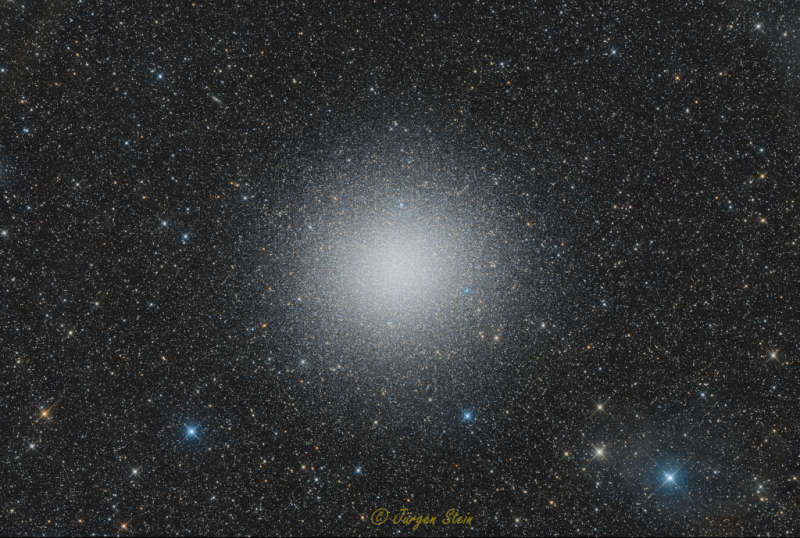
|
Credit & Copyright: Juergen Stein
Explanation:
Globular star cluster
Omega
Centauri
packs about 10 million
stars much older than the Sun into a volume some 150 light-years in
diameter.
Also known as NGC 5139, at a distance of 15,000 light-years
it's the largest and brightest of 200 or so known
globular
clusters that roam the halo of our Milky Way galaxy.
Though most star clusters consist of stars with the same age and
composition, the enigmatic Omega Cen exhibits the presence of
different
stellar populations with a spread of ages and chemical abundances.
In fact,
Omega Cen may be the
remnant
core of a small galaxy merging with the Milky Way.
With a yellowish hue,
Omega Centauri's red giant stars are easy to pick out in this
sharp
telescopic view.
A two-decade-long exploration of the dense star cluster
with the Hubble Space Telescope has revealed evidence
for a massive black hole near the
center
of Omega Centauri.
|
January February March April May June July August September October November December |
| ||||||||||||||||||||||||||||||||||||||||||||||||
NASA Web Site Statements, Warnings, and Disclaimers
NASA Official: Jay Norris. Specific rights apply.
A service of: LHEA at NASA / GSFC
& Michigan Tech. U.
Based on Astronomy Picture
Of the Day
Publications with keywords: Omega Centauri - globular cluster
Publications with words: Omega Centauri - globular cluster
See also:
